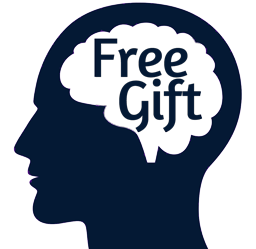Exercise Promotes Brain Plasticity (BSP 111)
/John Ratey, MD
Click picture to hear interview
According to psychiatrist Dr. John Ratey the best way to improve brain plasticity is by exercise. I spoke to him shortly after he published his best-seller Spark: The Revolutionary New Science of Exercise and the Brain (2008). He commented that even compared to drugs "Exercise is the champ."
Since then Dr. Ratey has been traveling the world promoting the value of exercise for people of all ages, but his main focus has been on young people and on trying to restore and invigorate physical education programs in the schools. In Spark he provided some of the preliminary evidence that vigorous exercise promotes better academic performance, but that evidence had continued to mount.
Besides improving academic performance regular exercise also helps over all mental health. Exercise is especially effective for problems like depression and ADHD. Our brains rely on a complex mixture of neuroactive chemicals (neurotransmitters, etc.), but since our understanding of these is still very primitive, treatment with drugs can be unpredictable. Dr. Ratey feels that medications can be an important part of treating problems like ADHD, but that exercise should be included as an essential element.
Of course, even those of us who don't struggle with mental illnes are concerned with keeping our brains healthy as we age. Here again Dr. Ratey argues that exercise is essential. He speculates that exercise tricks your brain "into thinking that you're younger and that you still need to grow, as opposed to being stationary and having atrophy occur." Also, when you keep on learning (new things) your brain continues to respond and build new pathways. This is very similar to what Dr. Michael Merzenich (one of the pioneers of brain plasticity) told us in BSP 105.
Dr. Ratey is working on a new book that will be an update on the science that has been done since Spark was published, but his 2008 interview remains one of my favorites. That's why I just released an updated version of this interview as BSP 111.
How to get this episode:
FREE: audio mp3 (click to stream, right click to download)
Premium Subscribers now have unlimited access to all old episodes and transcripts.
New episodes of the Brain Science Podcast are always FREE. All episodes posted after January 1, 2013, are free. See the individual show notes for links the audio files.
References and Links
Visit http:johnratey.com.
Spark: The Revolutionary New Science of Exercise and the Brain (2008) by John J. Ratey
A User's Guide to the Brain: Perception, Attention, and the Four Theaters of the Brain
by John J. RateySoft-Wired: How the New Science of Brain Plasticity Can Change Your Life by Dr. Michael Merzenich PhD (References for Soft-Wired)
See the episode transcript for additional references.
Related Episodes:
BSP 45: Dr. Ratey talks about ADHD
BSP 87: Dr. Patricia Greenwood talks about her book Nurturing the Older Brain and Mind.
BSP 105: Dr. Michael Merzenich talks about his book Soft-Wired: How the New Science of Brain Plasticity Can Change Your Life.
Announcements:
Reminder: The Brain Science Podcast mobile app is now FREE for iOS, Android and Windows Mobile. Click here to learn more.
This is the first time I have reposted an older episode. I need listener suggestions about what other older episodes you would like me to share with new listeners.
Don't forget to check out my other podcast Books and Ideas.
Please share your feedback about this episode by sending email to brainsciencepodcast@gmail.com or going to the Brain Science Podcast Discussion Forum at http://brainscienceforum.com. You can also post to our fan pages on Facebook or Google+.













